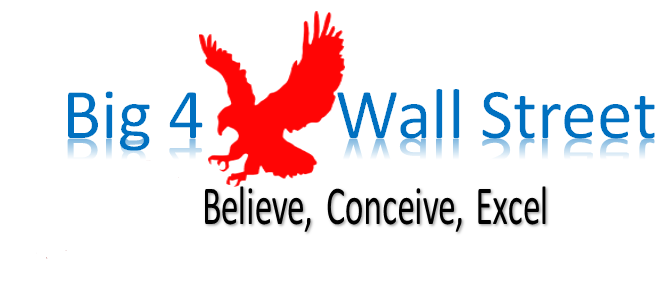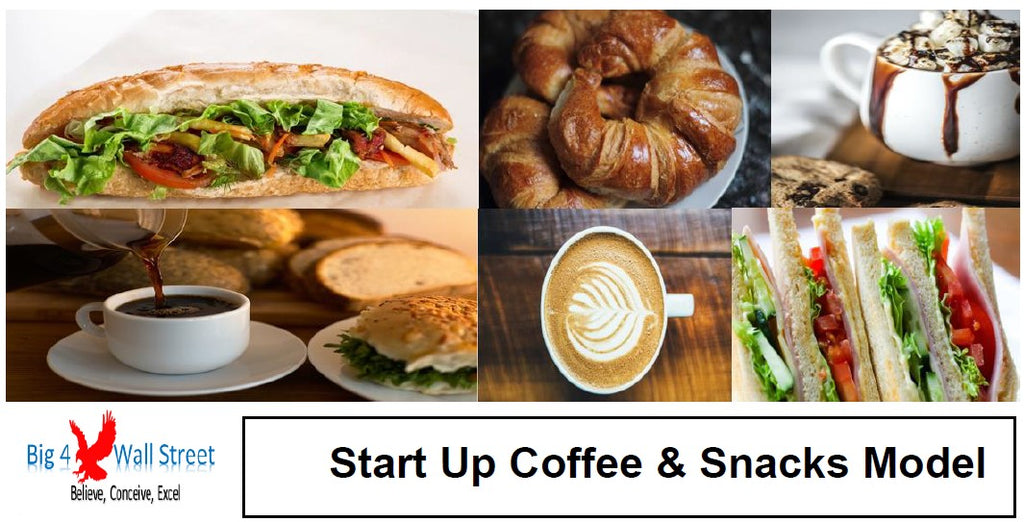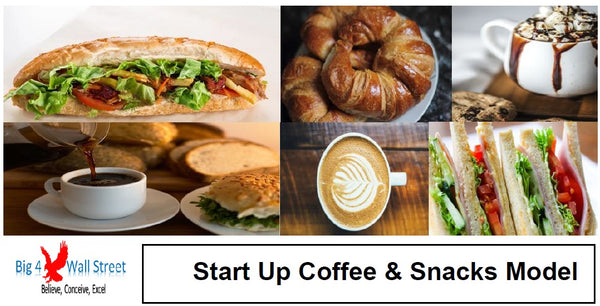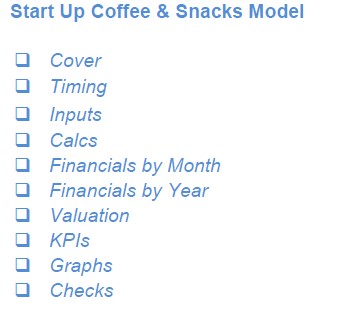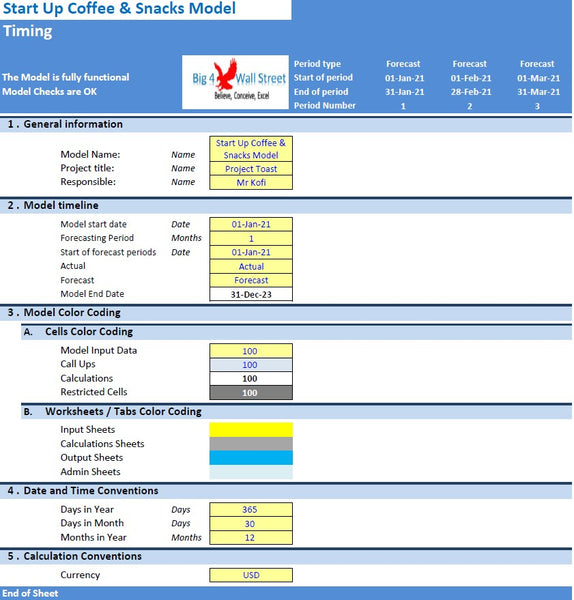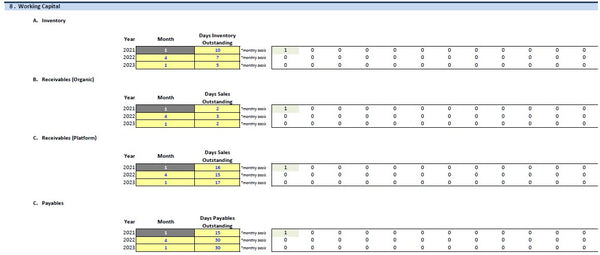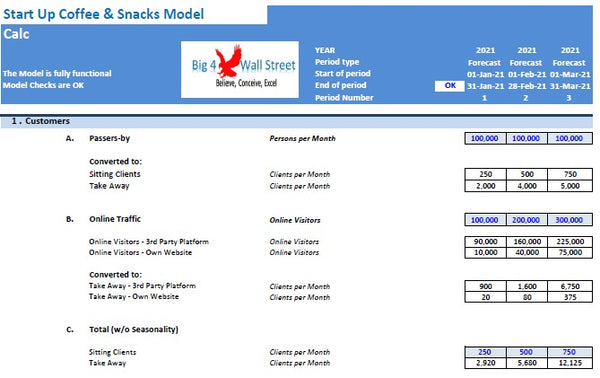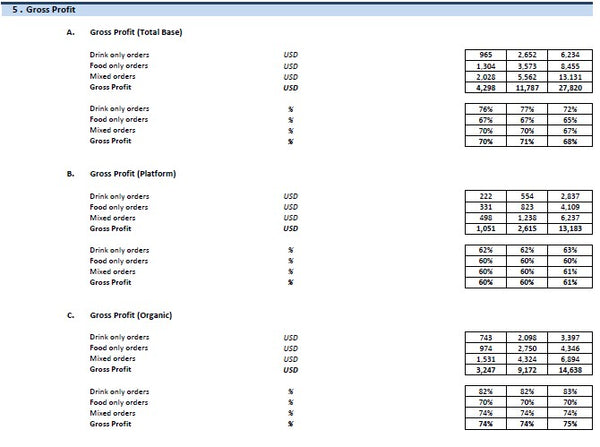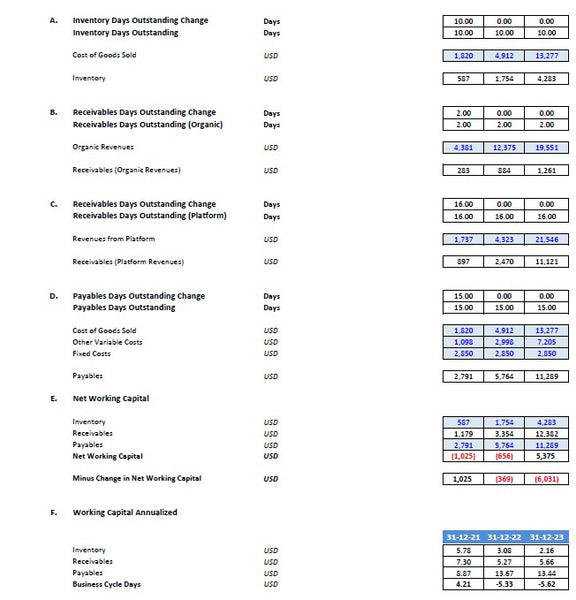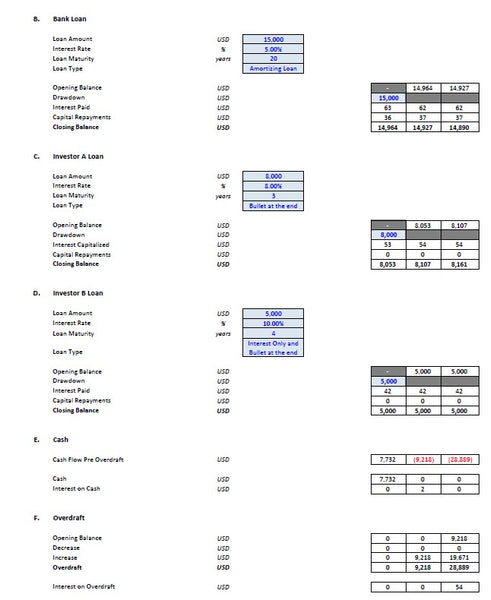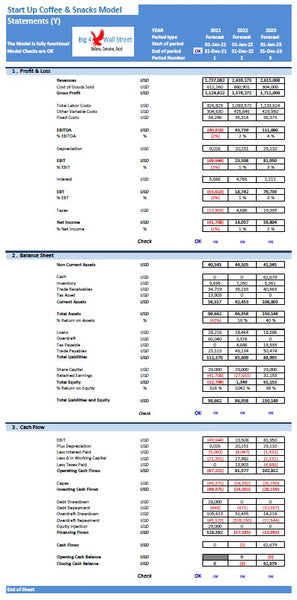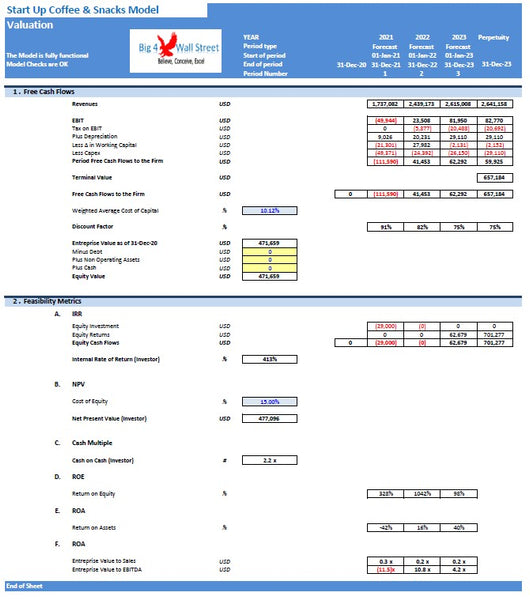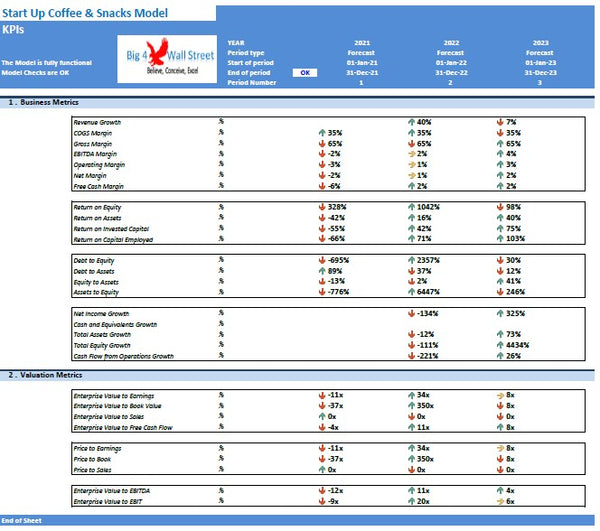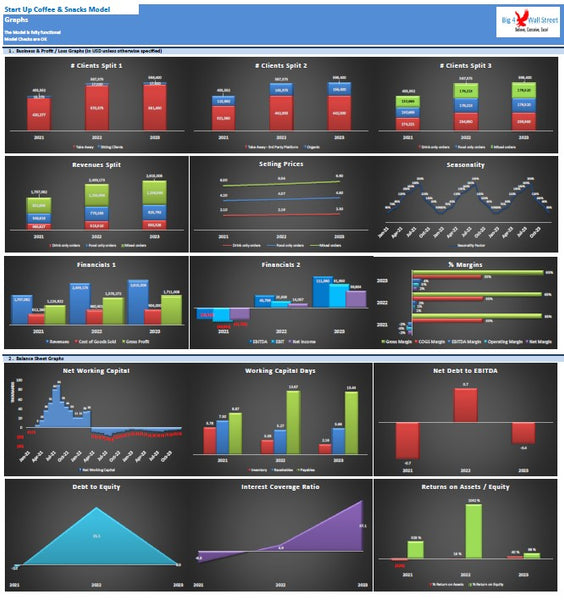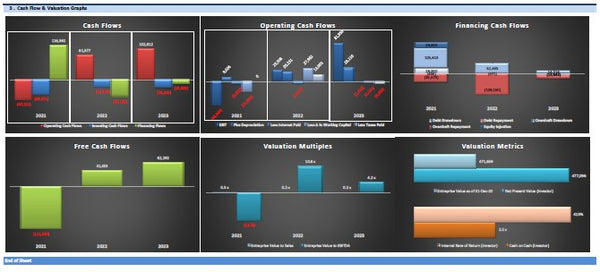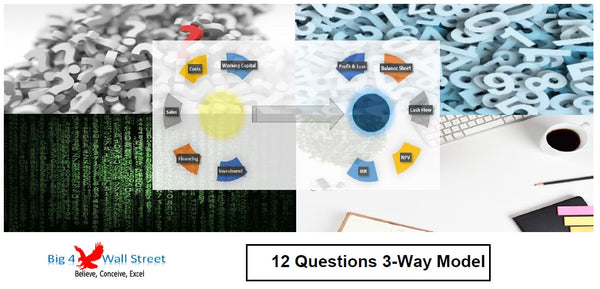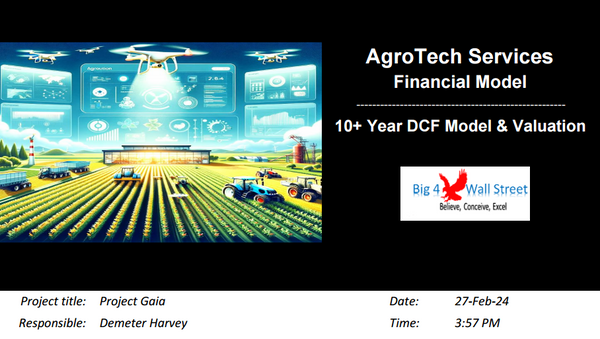Coffee and Snack Financial Model
This is a financial model for starting a coffee shop with snacks. The model supports both sitting clients as well as take away, additionally the model takes into account revenues from instore facilities as well as from online presence (website and related platform).
In addition to the revenues, the model also takes into account the respective seasonality of the sales, their related costs both as cost of goods sold, variable costs, commissions, as well as fixed costs, financing, depreciation, working capital, loan amortization, valuation and a series of ratios and KPIs , as well as a series of graphs.
This financial model template will enable you to:
- Plan your in store sales, take away sales as well as online sales.
- Seasonality mechanism per month to account for fluctuations in your business
- Analyze profitability by product type, and delivery type
- Setting up products, pricing, sales mix and costs by product.
- Forecasting platform commissions, labor costs and fixed costs
- Set the initial investment amount and the refurbishments / equipment needed
- Set the relevant currency and timing
- Create the three financial statements (Profit and Loss, Balance Sheet and Cash Flow) on a monthly basis for 36 months.
- Financial Ratios to check the viability of your business
- Printable model as PDF for your investors
So a quick overview of the model, in the contents tab you can see the structure of the model and by clicking on any of the headlines to be redirected to the relevant worksheet.
On the timing tab you are able to feed the general information for the model such as: model name, responsible, timeline of the model and date and currency conventions.
Additionally there is a description of the color coding of the model in the same tab. Inputs are always depicted with a yellow fill and blue letters, call ups (that is direct links from other cells) are filled in light blue with blue letters while calculations are depicted with white fill and black characters.
There is also a color coding for the various tabs of the model. Yellow tabs are mostly assumptions tabs, grey tabs are calculations tabs, blue tabs are outputs tabs (that is effectively results or graphs) and finally light blue tabs are admin tabs (for example: the cover page, contents and checks).
Moving on to the inputs tab, you can adjust the various assumptions of the model based on the specifications and requirements of your business. So effectively you can adjust the detailed revenue assumptions and the user can amend the most important drivers such as: customers, passers-by conversion and online conversion, as well as seasonality. Moving on the cost are comprised of three main categories: cost of food and beverages, labor cost (both full time employees and outsourced personnel), and operating costs (rent, utilities, consumables, insurance, advertising, maintenance etc). Going forward you can adjust non current assets, capex as well as their depreciation schedule, the working capital assumptions (inventory, receivables and payables) can also be adjusted accordingly and finally the financing assumptions of the business whether these are debt or equity financed can also be amended.
On the calculation tab, all calculations are performed instantly without the need of an excel macro. The calculations follow the same logical flow as the in the inputs tab. As already mentioned no inputs from the use are needed here, as all the inputs are fed in the yellow cells on the inputs tab only.
On the Financial Statements tabs you can see the resulting income statement, balance sheet as well as the cash flow of the company and or project.
In the Valuation tab, the valuation of the company is performed. In the same tab you can also find some feasibility metrics such as Return on Equity, Return on Assets, Net Present Value, Internal Rate of Return and Cash on Cash Multiple.
The most important business and financial KPIs are presented in the KPIs tab along with various valuation metrics. These KPIs are also presented by using some graphical representations in the Graphs tab. For example: Revenues & Operating Profit, Cost of Goods Sold, Cash Flows as well as a number of other financial metrics from valuation to profitability, working capital and debt.
Finally the checks tab where the most critical checks are aggregated in this page. Whenever you see an error message in any page, you should consult this page to see where the error is coming from.
